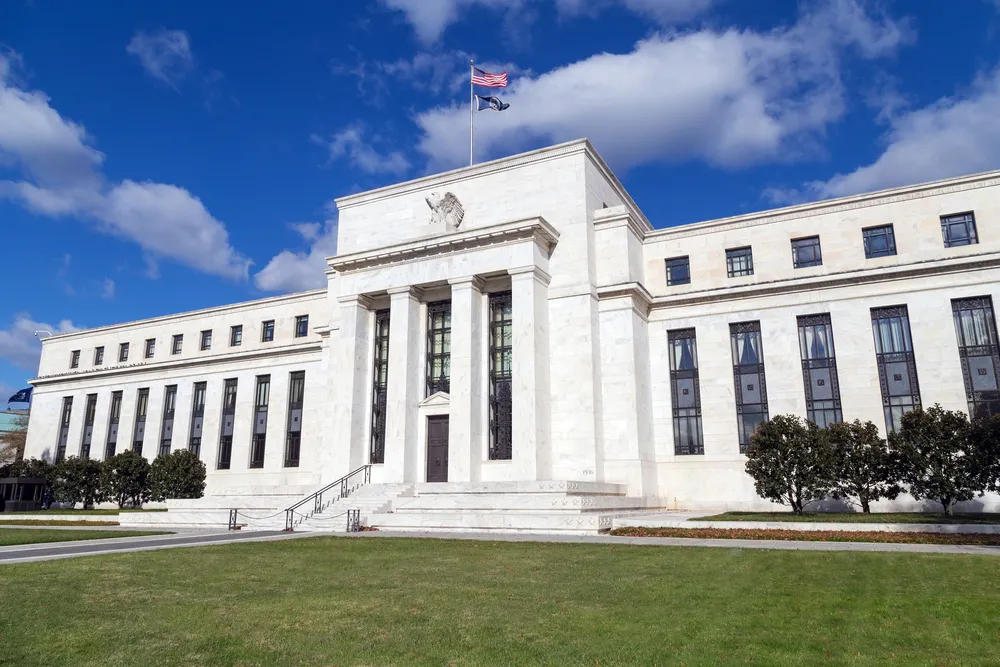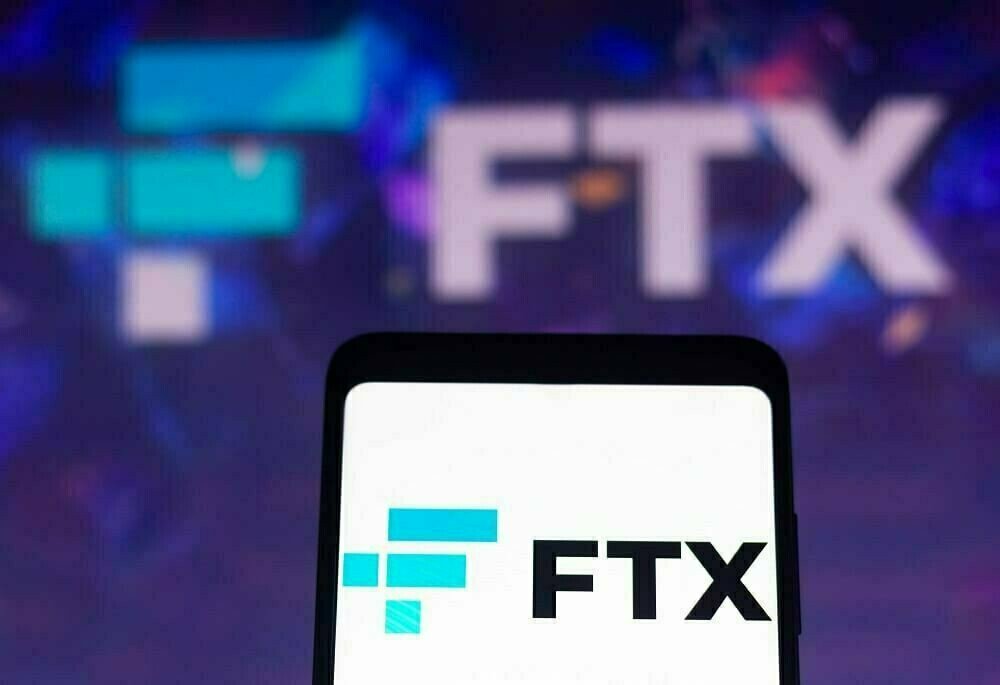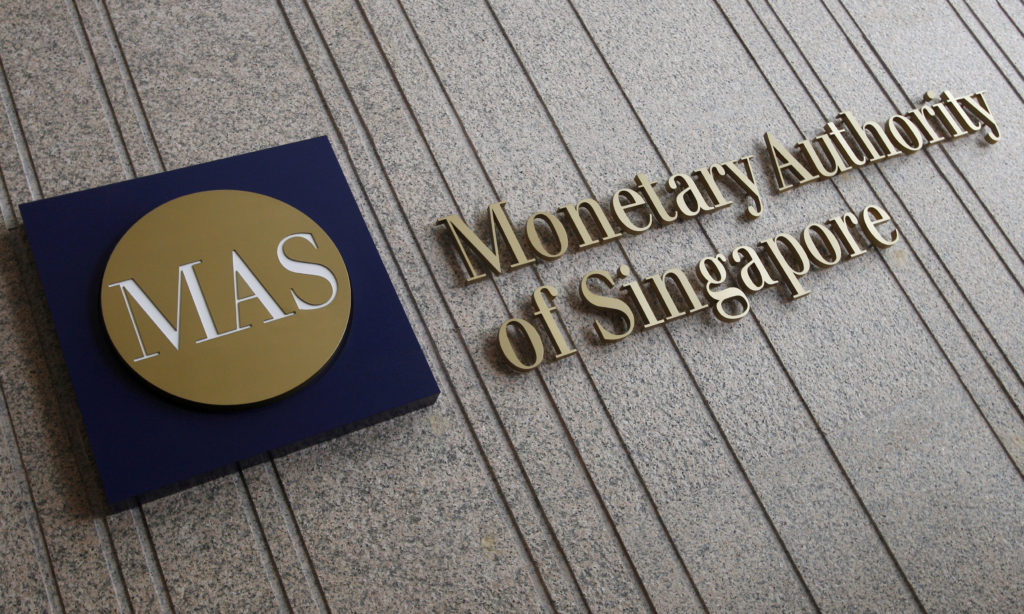The United States District Court for the District of Wyoming recently made a decision against Custodia Bank, denying it a U.S. Federal Reserve master account and dismissing its request for a declaratory judgment.
Despite this setback, Custodia is determined to fight back and is considering all available options, including an appeal.
“We are reviewing the court’s decision and all of our options, including appeal,” said a spokesperson from Custodia Bank to Cointelegraph.
The rejection came through a ruling on March 29 by Judge Scott Skavdahl, who turned down Custodia’s effort to obtain a master account.
This type of account is crucial for financial institutions, granting them direct access to the Federal Reserve’s payment systems.
Custodia argued that being denied a master account would significantly impair its ability to provide custodial services for crypto-assets, likening its potential operational status without one to a “second-class citizen” dependent on intermediary banks.
READ MORE: Goldman Sachs Sees Surge in Crypto Interest Following Spot Bitcoin ETF Approvals
Judge Skavdahl also stated that Custodia does not have the right to compel the Federal Reserve Bank of Kansas City (FRBKC) to grant it a master account, favoring FRBKC with a summary judgment on this claim.
Custodia initially applied for a Federal Reserve master account in October 2020, aiming for access to the Fedwire network.
This network is vital for processing transactions, having handled over 193 million transactions in 2023 alone.
The Federal Reserve had earlier, in January 2023, denied Custodia’s membership application.
The denial was based on Custodia’s engagement with cryptocurrencies, which the Fed found to be inconsistent with the legal requirements for such an application.
Custodia Bank, as one of Wyoming’s pioneering Special Purpose Depository Institutions (SPDIs), sought to serve businesses involved with cryptocurrencies that struggled to obtain services from banks insured by the Federal Deposit Insurance Corporation due to their crypto dealings.
To submit a crypto press release (PR), send an email to sales@cryptointelligence.co.uk.
CryptoQuant CEO Ki Young Ju has recently highlighted that the cost of mining Bitcoin using Antminer S19 XPs is projected to escalate from $40,000 to an eye-watering $80,000 following the Bitcoin halving event set for mid-April.
This adjustment occurs in the backdrop of the Bitcoin halving, an event that unfolds approximately every four years or after 210,000 blocks are mined, effectively slashing the mining reward by half.
This pivotal moment not only influences Bitcoin’s market value indirectly but also exerts a profound effect on miners’ operations by doubling the expenses required to mine the same quantity of Bitcoin.
Reflecting on the aftermath of the May 2020 halving, the cost for miners to sustain profitable operations surged past $30,000.
Concurrently, Bitcoin’s valuation soared to a record peak of $69,000 within the same cycle. As of April 6, the average expense tied to Bitcoin mining stands at $49,902, with the cryptocurrency’s market price breaching the $70,000 mark.
Post-halving on April 20, the mining cost is anticipated to climb beyond $80,000, necessitating a corresponding increase in Bitcoin’s market price for mining ventures to remain viable.
Historical patterns post-halving showcase significant surges in Bitcoin’s price, substantiating miners’ ability to maintain profitability despite initial apprehensions of potential insolvency.
Following the 2012, 2016, and 2020 halvings, Bitcoin’s value experienced monumental rises of approximately 9,000% to $1,162, 4,200% to $19,800, and 683% to $69,000, respectively.
READ MORE: Genesis Sells 36 Million GBTC Shares to Buy Bitcoin, Aiming to Settle Debts Amid Bankruptcy
Such increments have consistently offset the heightened costs and technological demands placed on mining operations, rendering only the most efficient machines competitive.
In the immediate aftermath of halving events, the Bitcoin community often faces a phase of uncertainty, marked by a below-profit-price BTC value, increased sales of mining equipment, and the exit of smaller mining entities.
Nonetheless, this period typically precedes a market correction driven by reduced supply and heightened demand, eventually elevating Bitcoin’s price well above average mining costs, thus securing miners’ profit margins in the longer term.
To submit a crypto press release (PR), send an email to sales@cryptointelligence.co.uk.
In a significant legal development, a group of former FTX investors, who initiated a class-action lawsuit claiming they were misled and defrauded, have reached a nearly $1.36 million settlement with key figures and promoters associated with the now-defunct cryptocurrency exchange.
The settlement, pending approval by a federal court in Miami as of March 27, involves FTX co-founder Zixiao “Gary” Wang, former engineering lead Nishad Singh, ex-CEO of Alameda Research Caroline Ellison, among others, including seven influencers and Daniel Friedberg, who served as FTX’s chief regulatory officer and FTX.US’s chief compliance officer.
The agreement entails that Wang, Singh, and Ellison will assist the plaintiffs by providing valuable information and documentation that could bolster the lawsuit against other defendants, including notable celebrities, enterprises, and venture capitalists implicated in the case.
Despite not admitting guilt to the allegations, their cooperation was deemed instrumental by the plaintiffs for its potential to reinforce their legal stance.
The trio, already implicated in fraud charges and having started to divulge critical evidence obtained during their tenure at FTX, will continue to share pertinent non-privileged materials and avail themselves for further testimonies and legal proceedings.
This cooperation extends to FTX’s bankruptcy proceedings, with an understanding that they will forfeit their assets for judicial determination regarding the restitution and allocation of funds to the victims.
READ MORE: Driving Cats NFT Club Drop Begins in Challenge to SHIB, BONK, PEPE and DOGE
The settlements also covered negotiations with Daniel Friedberg, who has been actively contributing information to the plaintiffs and vowed to maintain this support.
Friedberg’s involvement came under a different light as he claimed unawareness of the fraud until its revelation, after which he resigned and reached out to law enforcement authorities.
Additionally, several online influencers settled their part of the lawsuit by agreeing to monetary contributions, with Brian Jung, Kevin Paffrath, Tom Nash, Graham Stephan, Jeremy LeFebvre, and Andrei Jikh collectively contributing over $350,000.
Notably, a significant but undisclosed settlement, inferred to be around $1 million, was attributed to American football star William Trevor Lawrence, based on the cumulative settlement amount minus the known contributions.
The conclusion of these settlements marks a crucial step in addressing the grievances of FTX’s investors, offering them a pathway to recovery while ensuring the implicated parties’ accountability without directly admitting to the alleged misconduct.
To submit a crypto press release (PR), send an email to sales@cryptointelligence.co.uk.
The potential for Bitcoin‘s price to surge is a hot topic in the financial world, with some analysts predicting significant growth.
A notable analysis by a pseudonymous analyst, TechDev, shared with their 440,000 followers on social media, suggests that Bitcoin could see its price double from its current $69,000 within three months.
This prediction is based on Bitcoin’s performance in relation to the upper Bollinger Band, a technical indicator measuring market volatility.
According to TechDev, “every time Bitcoin had done this in the past, its price had doubled within the next three months.” If this pattern holds, Bitcoin could hit approximately $140,000 by July.
Bollinger Bands, used in this analysis, are a technical analysis tool that indicates the momentum and volatility of an asset within a specific range, with prices near the upper band typically signaling an overbought condition.
However, while Bollinger Bands can provide insights, they are more reactive than predictive, relying on past price actions and volatility.
Their effectiveness can vary significantly across different market conditions.
Beyond technical indicators, significant optimism about Bitcoin’s future price comes from influential figures in the financial sector.
READ MORE: Binance’s Trading Volume Soars to Record High, Cementing Market Dominance Amidst Crypto Market Rally
Anthony Scaramucci, CEO of SkyBridge Capital, voiced on CNBC his belief that Bitcoin’s value could soar to $170,000 during this cycle and potentially reach a market cap half that of the global gold market.
This implies a dramatic increase to around $400,000 per Bitcoin, given the current market caps of Bitcoin and gold.
Scaramucci highlighted the role of recently approved spot Bitcoin exchange-traded funds (ETFs) in driving up demand, noting that nine out of ten such ETFs have already seen over $12 billion in net inflows.
Furthermore, the anticipation surrounding the upcoming Bitcoin halving, expected on April 20, is seen as a significant catalyst for price appreciation.
This sentiment is echoed by Ripple CEO Brad Garlinghouse, who expects the value of the entire crypto sector to double by year’s end, driven by factors like halving, regulatory developments, and the growing popularity of Bitcoin ETFs.
Garlinghouse, with his extensive experience in the industry, remains “very optimistic” about the sector’s growth potential, particularly with the entry of institutional money facilitated by ETFs.
To submit a crypto press release (PR), send an email to sales@cryptointelligence.co.uk.
The Monetary Authority of Singapore (MAS) has made a significant move to broaden the regulatory framework surrounding digital payment token (DPT) service providers under the country’s Payment Services Act (PS Act).
This initiative aims to incorporate a variety of activities within the regulatory perimeter, including the provision of custodial services for DPTs, the facilitation of token transfers and exchanges, and the enabling of cross-border money transfers.
The MAS emphasized that these regulations would apply even when the funds are not physically handled by the service provider or when the transactions do not directly involve money entering or leaving Singapore.
With these amendments, the MAS seeks to strengthen its oversight by introducing additional requirements for DPT service providers, particularly in areas crucial to maintaining a secure financial environment.
The authority stated, “The amendments will empower MAS to impose requirements relating to anti-money laundering and countering the financing of terrorism, user protection and financial stability on DPT service providers.”
This regulatory expansion will be phased in starting April 4, with transitional provisions set to support entities navigating the new landscape.
Affected firms are mandated to communicate with MAS within a 30-day window and must secure a license within six months from this date to maintain operational status during the review process.
READ MORE: Finerca Revolutionizing Trading Education for Today’s Market Dynamics
The MAS has also made it clear that entities failing to meet these stipulations will be compelled to discontinue their operations immediately upon the enactment of these changes.
Moreover, the MAS plans to introduce further amendments aimed at bolstering the safeguarding of customer assets among payment token service providers.
These additional rules will address the segregation of customer assets, their safekeeping in trust accounts, and the maintenance of detailed records to enhance the security of these assets.
Such protective measures are slated for implementation six months after April 4.
The tightening of regulatory controls has not deterred crypto companies from entering the Singapore market, with prominent players like Crypto.com, Coinbase, and Ripple successfully obtaining full payment institution licenses.
Specifically, Crypto.com secured its Major Payment Institution (MPI) license in June 2023, Ripple was granted formal approval on October 4, and Coinbase achieved full MPI licensure on October 2, 2023, underscoring Singapore’s appeal as a crypto-friendly financial hub.
To submit a crypto press release (PR), send an email to sales@cryptointelligence.co.uk.
Musk Eclipse (ECLIPSE) is a memecoin that was launched on 9 April, and it has rallied over 500% since its launch, but it needs to surge another 700% from its current price to touch its all-time high.
Popular memecoins such as Dogecoin (DOGE) and Shiba Inu (SHIB) have been losing steam in recent weeks, but both of these tokens still have the potential to generate 200%-300% during the next bull run.
However, many investors are choosing to pour funds into small cap memecoins, as they can buy a large percentage of the supply for a relatively small amount of money.
For example, as Musk Eclipse (ECLIPSE) currently has a market cap of around $6,000, investors can buy up 5% of the supply for just around $300.
And, if the memecoin is able to achieve a multi-million dollar market cap, like many other newly launched memecoins, early investors would see their positions surge to hundreds of thousands or millions of dollars.
Musk Eclipse (ECLIPSE), which was launched on 9 April, is currently trading at $0.00000586 – up over 500% since it launched.
However, it needs to surge another 700% from its current price to touch the all-time high it reached on its first day of trading.
Investors are targeting further gains once this ATH is reached, with many investors expecting ECLIPSE’s (D6QcGYbrpzFjVEmzARLzMC2TdFiHhWaRoieq6YMJVZf8) market cap to exceed $500,000 before the end of April.
This would generate a return of over 9,000% for early investors, and there will be plenty of potential for further, explosive price growth beyond that, especially once centralized exchange listings are announced (the coin currently can only be purchased on Raydium and Jupiter.)
Dogecoin (DOGE) and Shiba Inu (SHIB) Price Prediction
After a period of consolidation, some memecoin investors remain very bullish on Doge, while others have cashed in their profits and invested in smaller cap tokens with more potential.
However, Dogecoin is still likely to rally by at least 50%-150% during the bull run, and it will most likely outperform Shiba Inu.
Although Shiba Inu has experienced strong price growth so far in 2024, there are signs that it is losing steam and will lose momentum as we go deeper into the year.
Canada has taken a significant step to bolster its artificial intelligence (AI) sector by allocating $1.76 billion (2.4 billion Canadian dollars) from its federal budget.
This move aims to sustain the nation’s “competitive edge” in the rapidly evolving field of AI.
A suite of new initiatives has been announced, focusing on supporting AI-related startups, medium-sized enterprises, and research entities, all in an effort to “secure Canada’s AI advantage.”
Canadian Prime Minister Justin Trudeau highlighted the transformative potential of generative AI, emphasizing its capability to unlock considerable economic benefits for Canada, enhance productivity, and reduce the necessity for workers to engage in monotonous tasks.
“The rapid advance of generative AI today will unlock immense economic potential for Canada, significantly improving productivity and reducing the time workers have to spend on repetitive tasks,” Trudeau stated on April 7.
The funding package includes a $1.47 billion investment aimed at augmenting computing capabilities and other AI-related infrastructures via the new AI Compute Access Fund.
This initiative is designed to support the nation’s premier AI researchers and startups.
Furthermore, an additional $147 million will be allocated to AI startups within the agriculture, clean technology, healthcare, and manufacturing sectors.
Meanwhile, $73.5 million is set aside to aid small and medium-sized AI scale-up companies in enhancing productivity.
Trudeau also mentioned the positive impact AI has had in areas such as drug discovery, energy efficiency, and housing innovation, acknowledging the technology’s role in driving innovation, productivity, and economic growth.
Moreover, a portion of the fund is dedicated to addressing the workforce adjustments necessitated by the AI surge, with up to $36.8 million directed under Canada’s Sectoral Workforce Solutions Program for the re-training and re-skilling of workers across diverse sectors.
The film and animation industries are identified as particularly vulnerable to the disruptions caused by generative AI, a concern highlighted by a report from CVL Economics.
To further ensure the safe development and deployment of AI technologies, $36.8 million will be utilized to establish a Canadian AI Safety Institute.
Highlighting its pioneering role in AI governance, Canada introduced the Pan-Canadian Artificial Intelligence Strategy in 2017, marking its ambition to lead in AI adoption through focused research and commercialization efforts.
The country’s AI market is valued at approximately $7.4 billion, contrasting with the United States’ $106 billion market.
Efforts to enhance Canada’s AI landscape include engaging AI firms from the European Union and supporting leading startups like Tenstorrent, which recently partnered with Samsung to advance AI chiplet technology, following a significant funding round.
To submit a crypto press release (PR), send an email to sales@cryptointelligence.co.uk.
Flare, a groundbreaking blockchain designed for data, proudly introduces the Raindex desktop application, marking a significant evolution in decentralized exchange (DEX) technology. This innovative platform merges the best features of centralized exchanges (CEXs) with the benefits of decentralized finance (DeFi), offering users a unique, trustless trading experience without the need for intermediaries.
The Raindex app is designed to facilitate advanced trading operations such as setting bid and offer prices, activating stop loss and take profit mechanisms, and even emulating other traders’ strategies entirely on-chain.
At the heart of Raindex’s functionality is the Flare Time Series Oracle (FTSO), a decentralized price oracle that ensures accurate and secure asset price triggers. This technology enables the app to deliver real-time asset prices every 1-2 seconds through its “Fast Updates” feature, supported by Flare’s novel architecture. Raindex utilizes an intents-like architecture, allowing users to define desired trade outcomes without specifying the means of achieving them.
This approach not only simplifies trading but also enhances strategy deployment efficiency.
Raindex’s core is powered by Rainlang, an intuitive smart contract language that empowers users to craft, deploy, and manage custom token trading strategies with ease. Emphasizing accessibility, Rainlang is designed to be as simple as Excel formulas, broadening its appeal to a wider audience. This language supports a variety of trading strategies, including dollar-cost averaging, stop losses, and trend tracking, among others.
Josh Hardy, Co-founder of Rain, emphasizes the importance of secure, reliable data in trading strategy development, expressing enthusiasm for integrating Rainlang and Raindex into the Flare ecosystem. Similarly, Hugo Philion, Co-founder and CEO of Flare Labs, highlights the recent enhancements to the FTSO, which now supports the delivery of up to 1,000 asset prices on-chain every second, thereby enabling the extensive functionalities of a CEX within the secure framework of a DEX.
To celebrate its launch and encourage community engagement, Raindex is hosting a trading contest throughout May 2024. Participants have the chance to win from a prize pool of $12,000 by showcasing their most profitable trading strategies using Rainlang.
Bitcoin has made a lot of progress in the last couple of years, with the emergence of Layer-2 projects such as Stacks, Rootstock and Merlin Network enhancing its capabilities to support basic smart contract functionality.
Those projects are striving to create a new generation of Bitcoin-native DeFi applications, play-to-earn games and NFTs, but they face a number of challenges in pursuing this dream. Many of these new Bitcoin L2s are unable to interoperate with each other, leading to problems around ecosystem fragmentation.
It’s with these challenges in mind that a new project, which leverages the unique capabilities of the EOS blockchain, has emerged, to streamline the flow of data between Bitcoin and its nascent ecosystem of L2s.
A hybrid consensus mechanism to link Bitcoin’s L2s
That new project presents itself as exSat, and it is building what it describes as a “Docking Layer” for Bitcoin’s ecosystem. It utilizes a revolutionary hybrid consensus mechanism that encompasses the traditional Proof-of-Work, the Proof-of-Stake algorithm used by Ethereum and other chains and the Delegated Proof-of-Stake mechanism pioneered by projects such as Polkadot.
exSat’s plan is to facilitate direct interaction between Bitcoin and its L2s without compromising the inherent security of Bitcoin’s original blockchain.
The exSat architecture relies on a system of both Synchronizers and Validators. The Synchronizers’ role is to supply a bridge between Bitcoin’s blockchain network and exSat (and hence, all of Bitcoin’s L2s), ensuring that data and transactions can be processed quickly and accurately. According to exSat, existing Bitcoin miners will take on this role, with their work secured by Bitcoin’s standard PoW consensus mechanism. For participating, they’ll be rewarded with exSat’s native XSAT tokens for processing each block.
As for the Validators, their job is to verify the data that’s processed by the Synchronizers. This is where the PoS consensus mechanism comes in, as anyone will be able to become a Validator simply by staking both BTC and XSAT tokens. There’s quite a hefty barrier to entry though, as exSat requires a minimum 100 BTC stake to participate, plus another XSAT stake to become eligible for the XSAT rewards.
On-Chain Data Storage and EVM Compatibility
There are few other components to this system, with the most notable one being its Data Consensus Extension Protocol, which makes it possible for exSat to make use of EOS’s blockchain, supporting on-chain data storage with high-speed access for BTC assets such as BTC tokens, Runes, BRC20, BRC217 and Ordinals.
Another element of exSat’s architecture is its decentralized state data indexing platform for Bitcoin-native assets, which is a fundamental ingredient for smart contracts, EVM compatibility and trustless interactions. Finally, exSat has created its very own smart contract platform that leverages its EVM interoperability to enable universal gas fees for Bitcoin assets.
Combined, the various features of exSat’s architecture make it possible for Bitcoin and any L2 network to interoperate seamlessly with one another. At the same time, it supports enhanced smart contract functionality required for the next-generation of Bitcoin-native dApps.
Accelerating Bitcoin’s Transition
What exSat is building sounds ambitious, yet it also appears to be very well thought out, catering to a real need that will only become more acute as Bitcoin’s L2 ecosystem grows.
Those L2 networks have already propelled Bitcoin on an evolutionary path that will transform its utility and, perhaps, ultimately help it compete with and maybe even surpass Ethereum as the world’s number one smart contract chain. exSat can play a pivotal role in accelerating that translition.
Mechanism Capital co-founder Andrew Kang has highlighted the potential profitability of a new breed of memecoins, termed “culture coins,” which delve into deeper cultural values like politics, religion, and lifestyle, beyond the typical animal-themed and humor-based meme tokens.
In a post on X dated April 7, Kang pointed out that these culture-centric memecoins could outperform traditional memecoins such as Dogecoin or Shiba Inu by leveraging the strong values and identities of their communities.
“Communities with strong values and identities naturally try to convert others to their beliefs and publicly display what it is they love about their lifestyle.
“They are inherently viral,” Kang explained.
Highlighting the virality and ideological breadth of these coins, Kang noted, “The ideologies of these communities can be purely about politics, religion, consumer goods, sport, way of life or can be a mixture of all.”
He cited the rapid growth of two Solana-based memecoins, Jeo Boden (BODEN) and Doland Tremp (TREMP), as evidence of the appeal of culture coins, especially among communities with specific political inclinations.
BODEN, in particular, has seen its value skyrocket by over 700,000% since its launch on March 9, achieving a market cap of $473 million.
TREMP, while not as explosive as BODEN, has also seen considerable gains, boasting a $73 million market cap.
READ MORE: Binance’s Trading Volume Soars to Record High, Cementing Market Dominance Amidst Crypto Market Rally
Beyond politics, Kang sees potential in memecoins associated with consumer brands, such as ZYN and MOUTAI, which Mechanism Capital has invested in.
He argues these brand-affiliated coins could leverage the lifestyles associated with the brands for added virality, contrasting them with animal-themed coins for their added advantage.
Kang equates investing in memecoins with investing in traditional assets, noting that the most substantial returns often come from assets that garner widespread belief.
Yet, the crypto industry remains divided on memecoins’ impact.
BitMEX co-founder Arthur Hayes views them as a “net positive” for blockchain networks, while critics argue they represent a speculative hazard that undermines blockchain’s foundational principles.
Despite these diverging opinions, memecoins have proven to be a lucrative sector within the cryptocurrency market, with the top ten memecoins averaging gains of 1,312.6% in the first quarter of 2024.
This performance was notably higher than other crypto narratives, making memecoins the most profitable sector in the crypto industry for that period, as reported by CoinGecko analyst Lim Yu Qian.
To submit a crypto press release (PR), send an email to sales@cryptointelligence.co.uk.











